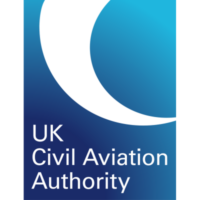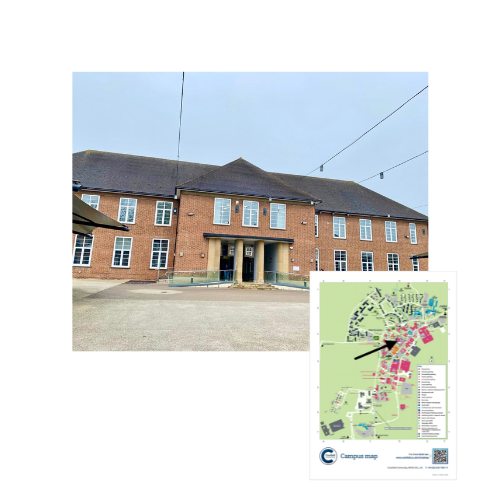The UK Government wants the UK to have an advanced aviation ecosystem where everyone can benefit from new technology while tackling emissions. To help it get there, the Department for Transport has announced over an additional £20 million.
Drone services at a commercial scale and flying taxis could soon be a reality as the Aviation Minister confirms over £20 million funding today (1 April 2025) to launch new flight technologies.
The new funding will unlock barriers to growth – which is the priority of the Plan for Change – and maximise opportunities for better and cheaper public services while cutting carbon emissions.
It is designed to advance aviation tech to support healthcare for the NHS, assist police forces in combatting crime, help inspect and survey critical infrastructure and unlock delivery services for businesses and communities across the country.
As part of this, both the Aviation Minister and Science Minister have today also set out how the Department for Transport (DfT), Civil Aviation Authority (CAA) and the new Regulatory Innovation Office (RIO) in the Department for Science, Innovation and Technology (DSIT) will streamline regulatory processes to support the commercialisation of the industry.
Aviation Minister, Mike Kane, said:
I want the UK to have the most advanced aviation technology ecosystem in the world.
That means creating a nimble regulatory environment and a culture of innovation so everyone can benefit from cutting-edge transport while tackling emissions, traffic and potentially saving lives.
Our investment alongside the new Future of Flight industry group will bring together tech experts, drone operators, flying vehicle manufacturers and local communities to identify where change needs to happen.
With safety at the heart of these advancements, the RIO is driving smarter regulation to cut red tape while ensuring high safety standards. It will support DfT and CAA in enabling faster, integration of drones and flying taxi industries, helping businesses grow and innovate.
This includes consulting on the mandatory use of new electronic conspicuity standards and technologies, which allow aircraft to share their location electronically, helping drones and crewed aircraft fly safely alongside each other. By making approvals quicker and operations more efficient, this will open new opportunities for the industry while maintaining the highest safety standards.
Science Minister, Lord Vallance, said:
These regulatory reforms for drones – requiring all aircraft to share their location – will make drone operations safer and therefore speed up approvals, allowing them to operate near airports and simplifying their use for delivering medical supplies – while unlocking further commercial opportunities.
This is a practical step to cut red tape and a great piece of progress for the Regulatory Innovation Office, growing the UK’s position as a world leader in emerging technologies and helping drive the growth that will deliver our Plan for Change.
In addition, as previously confirmed by the Chancellor, plans are now underway to simplify regulations to enable 2-year airspace change for drone operations. This will enable operators to fly safely for longer and gather data to inform future services.
Other changes will simplify regulations to enable emergency services including firefighters and paramedics to use drone services, as well as noise exemptions for drone trials within the Airspace Change Process, and simplifying the drone operational application process to enable them to get flying faster and easier.
Furthermore, the regulator, drone operators, flying vehicle innovators and local authorities will come together with government at the Future of Flight industry group to help guide the government on its mission to transform technology in aviation.
Part of the government’s Plan for Change, the group will focus on how to unlock the benefits of future aviation technologies to propel the country’s economic growth forward. It will look at how government can harness the potential of technology and create a culture of innovation, with the aim of improving everyday challenges like emergency across the public sector face, while helping cut carbon emissions.
The Minister for Aviation will co-chair the group, alongside Duncan Walker, CEO of Skyports.
Duncan Walker, CEO of Skyports and Co-Chair of the Future of Flight industry group, said:
This additional government funding is a vital boost for the UK’s leadership in next-generation aviation. This investment will accelerate the development and deployment of innovative flight technologies, from complex drone operations to advanced air mobility solutions.
I welcome this commitment, which will not only drive progress towards a more sustainable and connected future but also deliver significant economic benefits, high-value jobs and export opportunities across the UK. I look forward to continuing to work in close partnership with government and the regulator to turn these opportunities into reality.
The funding will be divided between the CAA, receiving £16.5 million in 2025 to 2026, to deliver a regulatory programme to enable drones to fly beyond visual line of sight (BVLOS) and progress toward routine use of air taxis (eVTOLs) in UK skies.
This includes publishing a piloted eVTOL ‘roadmap’, development of ‘drone pathways’ for industry to follow and consulting on concept of operations for uncrewed traffic management (UTM) and Detect and Avoid (DAA) technology. This will make it quicker and easier for industry to prove the safety of these new technologies, deliver the necessary digital infrastructure and make sure that people, property and other aviation remain safe and secure when these new technologies fly in our skies.
Stuart Simpson, CEO of Vertical Aerospace, said:
Flying taxis will transform the way we move — making it quicker, quieter and cleaner to travel while connecting communities and supporting essential services.
The UK has an incredible opportunity to lead the world in this new era of aviation, delivering not just greener transport but real economic growth and skilled jobs.
This latest funding is another welcome step towards seeing that ambition realised and our world-leading aircraft flying in British skies from 2028.
In addition, the Future Flight Challenge will receive up to £5 million from DfT and Innovate UK, to support industry to turn these new technologies into profitable business that benefits communities and support growth. This will include regional demonstrations and supporting development of commercial drone and air taxi solutions.
Mike Biddle, Executive Director of Net Zero, Innovate UK, said:
Innovate UK is excited to build on the highly successful work of the Future Flight Challenge by working in partnership with DfT through this joint funding. We look forward to working with industry, end-users, DfT, DSIT and the CAA as we accelerate the transition from innovation to commercial operations.
1st April 2025












